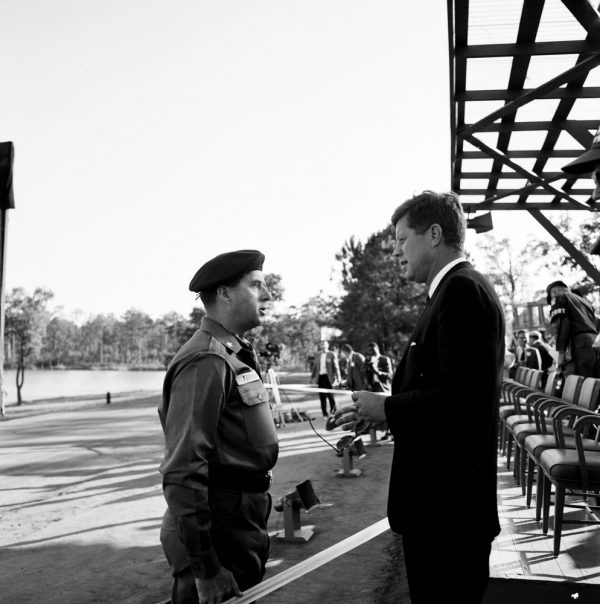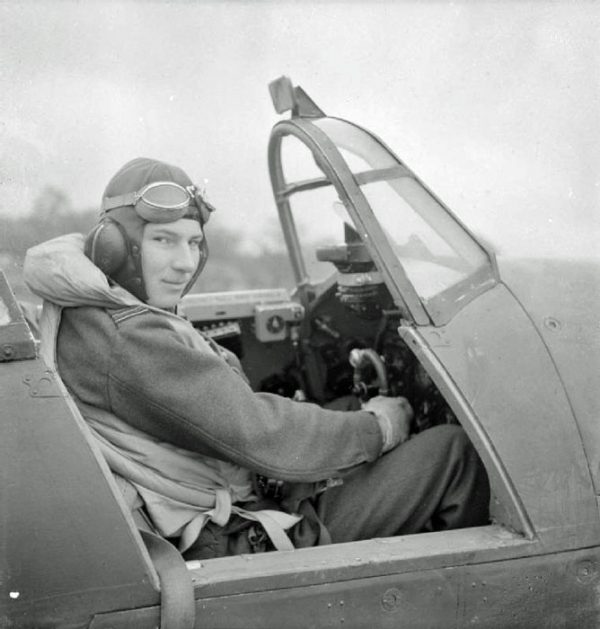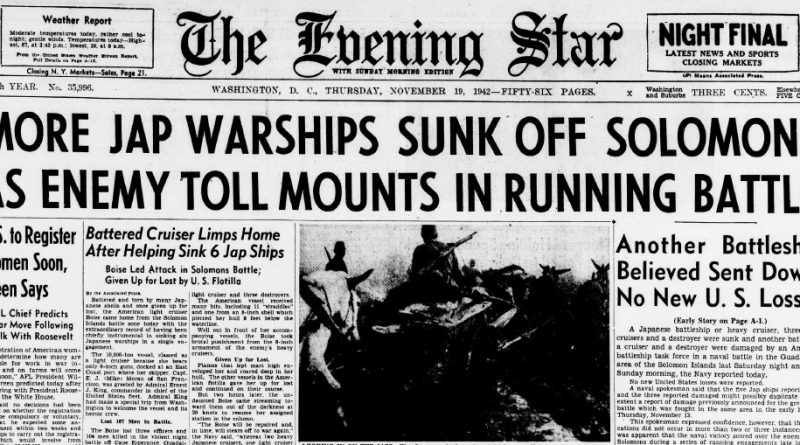World War II Chronicle: November 19, 1942
Click here for TODAY’S NEWSPAPER
Page two mentions that American paratroopers have seized airfields in French North Africa. By now the 509th Parachute Infantry Battalion has conducted two combat jumps: one on Nov. 8 and another on Nov. 15. The first jump began on Saturday, Nov. 7 when 39 C-47 transports lifted off from Corwall, England for a 1,500-mile flight over Spain. The air crews were inexperienced, only four planes had navigation equipment, and the ‘chutists had only conducted daylight training jumps over large landing zones.
Their objectives were two airfields south of Oran: Tafaraoui and La Sénia, and the soldiers didn’t know if they were going to fight or be welcomed by the French defenders when they hit the ground. After taking off, the formation was scattered by a storm and blown well off course on their nine-hour flight. Pilots resorted to dead reckoning since clouds obscured the stars. Running on fumes, C-47s landed where they could, and not many of the 556 men actually got to jump. Some planes were shot down, and some paratroopers accidentally jumped into Spanish Morocco and were detained for the next several months. Fewer still made it anywhere near their objective, which were taken by the 1st Infantry Division. Lt. Col. Edson D. Raff, commanding officer of the 509th, broke ribs on his jump and he and his men had to march some 35 miles to reach their airfield.
Maj. William P. Yarborough was Lt. Gen. Mark Clark’s airborne adviser and the plane he was riding was shot down by a French fighter. He managed to jump again a week later along with Col. Raff, seizing the airfield at Youks Les Bainswhich. Yarborough fights across North Africa and Sicily and is given command of the 509th while in Italy. The innovative officer not only designed the parachute badge, uniform, and boots, along with patents for several aerial delivery methods, he is named commandant of the Army’s Special Warfare Center in 1961 and oversees the creation of several Special Forces groups.

Raff also fought across Africa, then landed on Utah Beach during the Normandy Invasion. He fought in the Battle of the Bulge and jumped again during Operation VARSITY in Germany. He will command the 77th Special Forces Group during the 1950s and Yarborough credits Raff as the “father” of the green beret…
On page seven Lt. Col. William N. McKelvy Jr. is mentioned having been decorated for valor on Guadalcanal. McKelvy commands the 3rd Battalion, 1st Marines and was presented the Navy Cross by Vice Adm. William F. Halsey Jr. McKelvy is a 1921 graduate of the Naval Academy and retires as a brigadier general. His father, William Sr. is also an Annapolis graduate (Class of 1891). The elder McKelvy fought in the Spanish-American war where he received a brevet promotion to captain for valor at Guantanamo Bay, the Boxer Rebellion in China, and had several deployments to the Caribbean before retiring a colonel in 1925…
Royal Air Force Squadron Leader James Archibald Findlay MacLachlan is headed for the United States for a lecture tour and to instruct RAF pilots training at Pensacola, Fla. “One-Armed Mac” had his left arm amputated below the elbow after being shot down by a Luftwaffe pilot in February 1941. He had a prosthetic forearm and hand made that he uses to fly fighters. He was flying two weeks after surgery and returned to combat two months later. Stay tuned for more…

Sports section begins on page 46, which features a column by Grantland Rice
Evening star. (Washington, D.C.), 20 November 1942. Chronicling America: Historic American Newspapers. Lib. of Congress.
https://chroniclingamerica.loc.gov/lccn/sn83045462/1942-11-20/ed-1/
